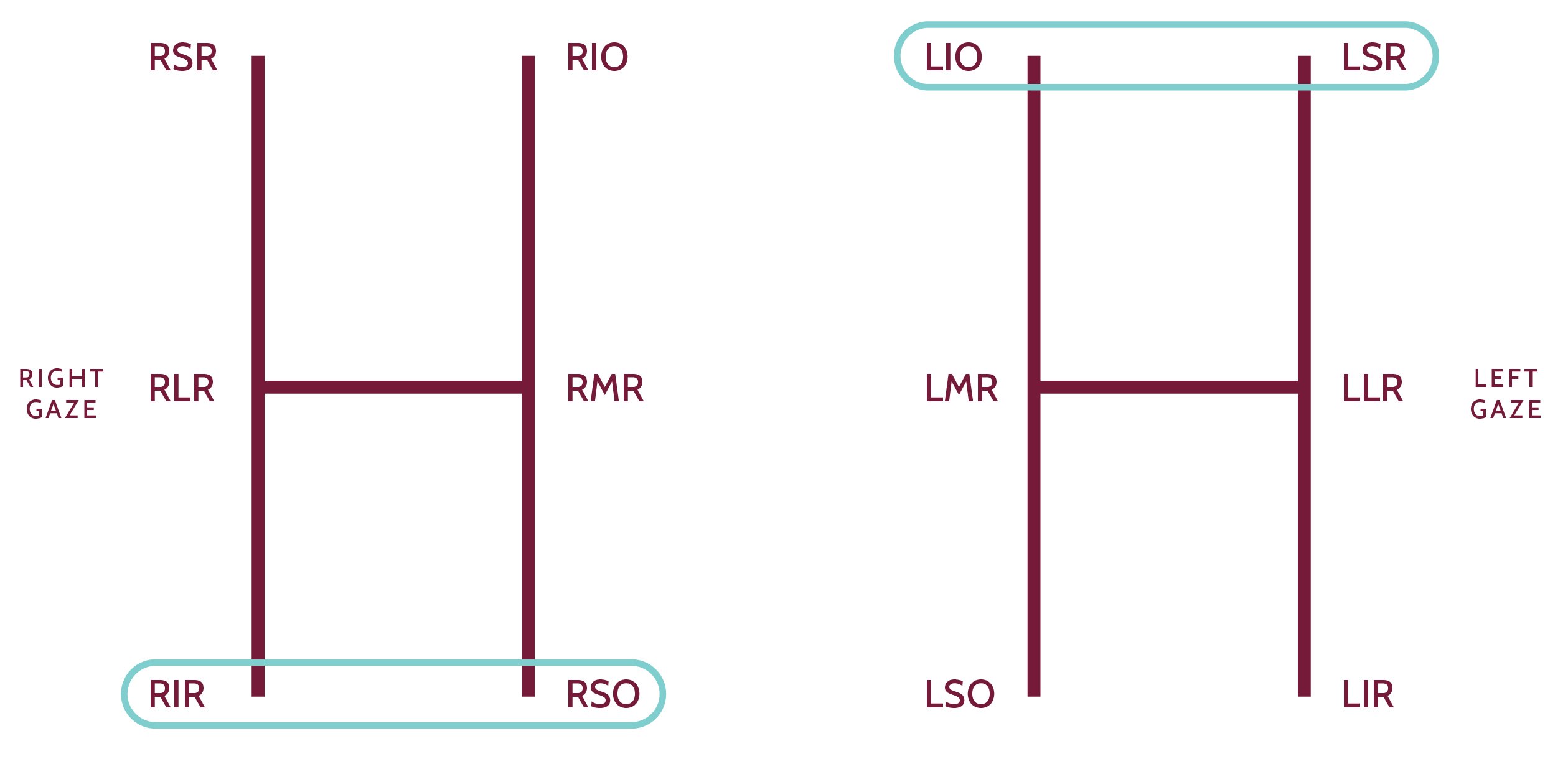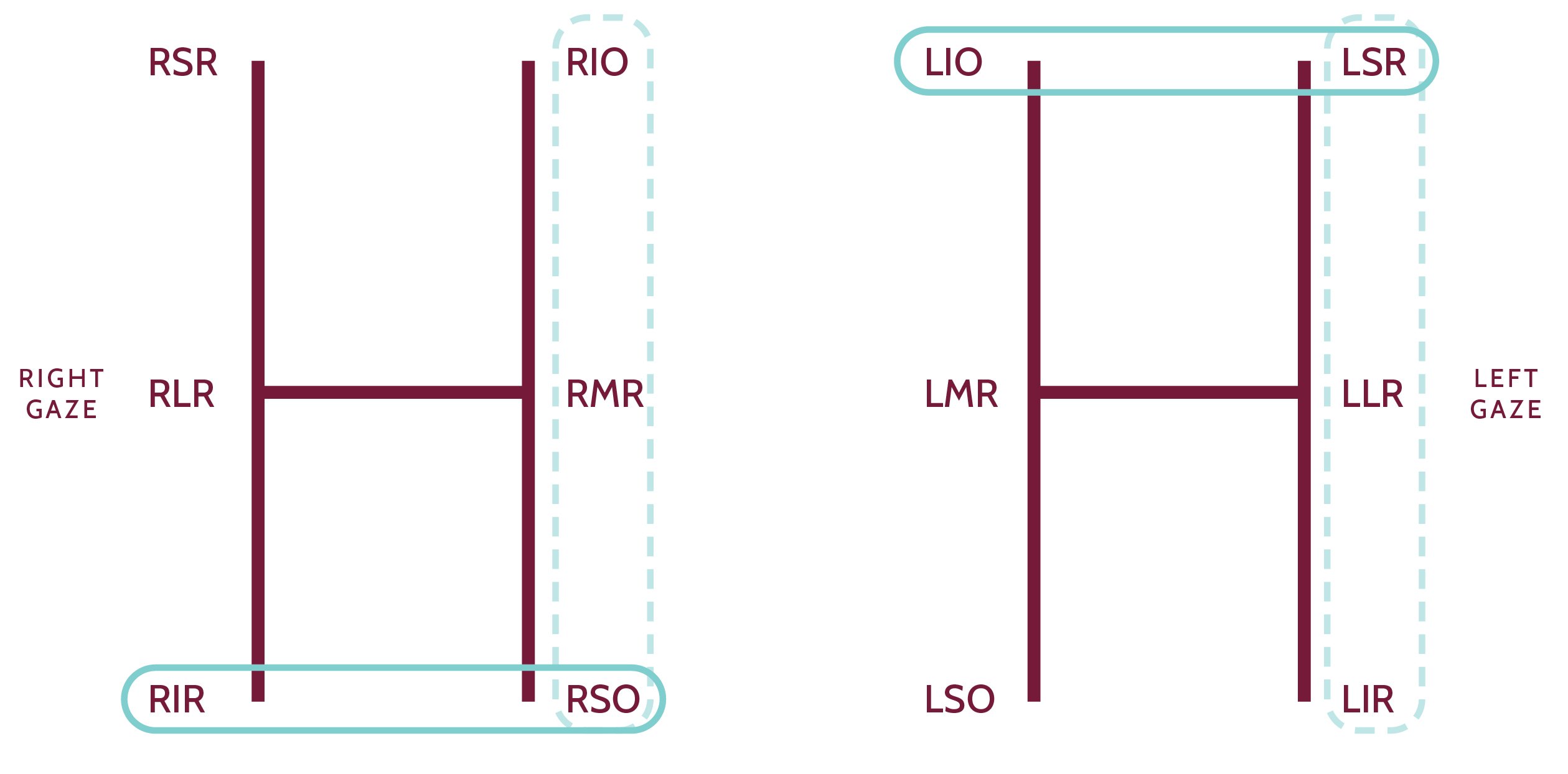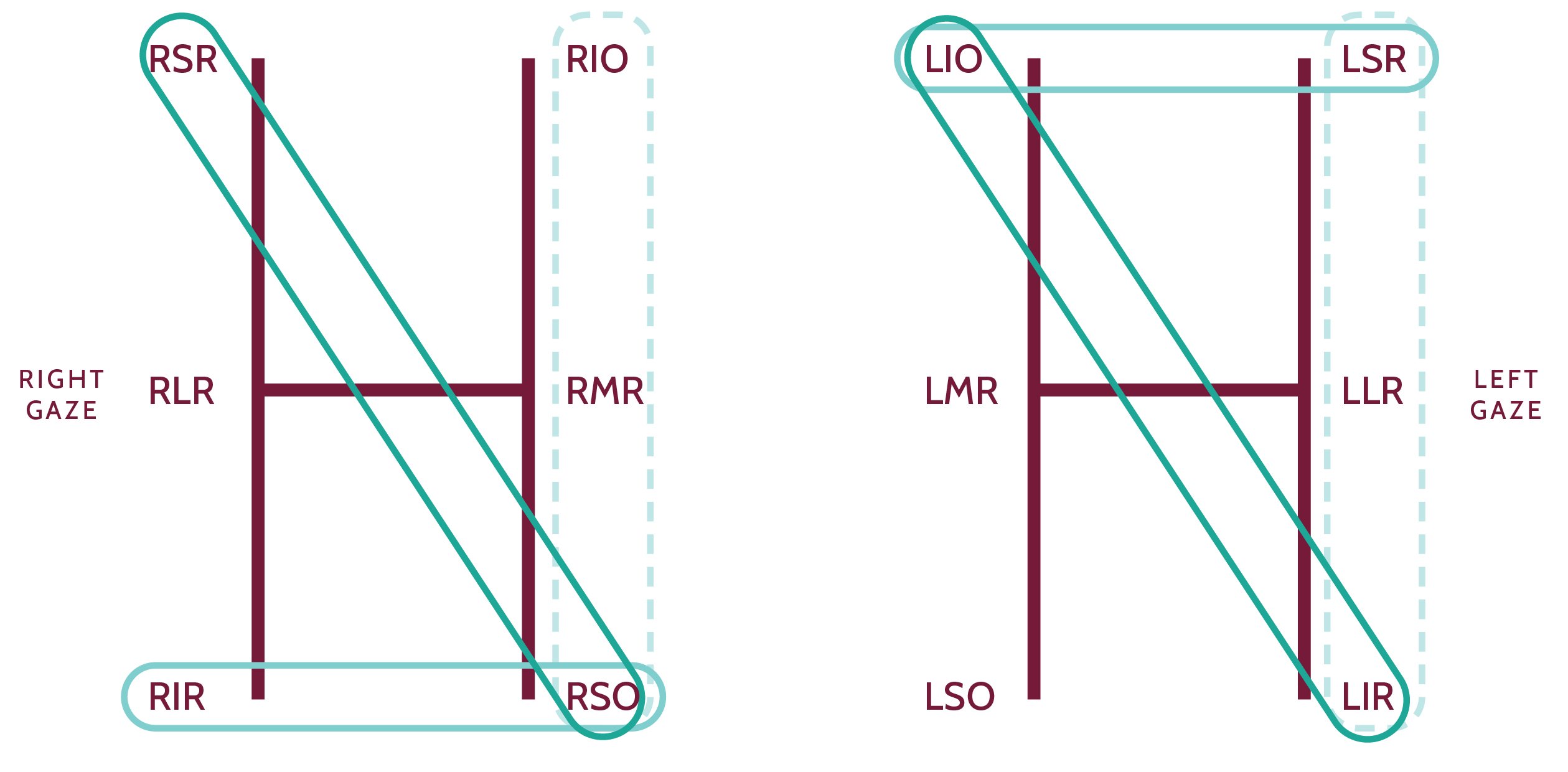
If you are anything like me, when I hear of a patient on their way into the office complaining of sudden onset of double vision, I get a little worried! I was never good at remembering all of the cranial nerve palsies, signs, symptoms, diagnoses, and causes.
But what I do remember is how easy the Parks 3-step test is in helping isolate the paretic muscle in cases of an acquired hypertropia. Here is a quick review that can help you feel more confident in tackling these patients!
1st draw out the six cardinal positions of gaze with the muscles primarily involved in each position for each eye:

Step 1
Which eye is hypertropic in primary gaze?
If the right eye is hyperdeviated in primary gaze, the muscle that is paretic is either responsible for pulling the right eye down, or for pulling the left eye up. Therefore, our suspects in the right eye are the right superior oblique (RSO) or right inferior rectus (RIR). In the left eye, the left superior rectus (LSR) or left inferior oblique (LIO) are suspect. We can eliminate all other possibilities. (The opposite is true if the left eye is hyperdeviated in primary gaze).
Circle the RSO and RIR, and LSR and LIO on your drawing.

Or, simply just circle the bottom muscles of the hypertropic eye and the upper muscles of the contralateral eye on your drawing (without having to think about the actions).
Step 2
Is the vertical deviation greater in right or left gaze?
Let’s say the deviation is greater in left gaze. This means that the paretic muscle must either be one of the muscles whose primary action is elevating the left eye on left gaze, or one of the muscles whose primary action is depressing the right eye on left gaze. The RIO and LSR both have a primary action of elevating the eyes in left gaze and the RSO and LIR both have a primary action of depression in left gaze. (Again, the opposite is true if the deviation is greater in right gaze)
Circle the RIO and RSO, and LSR and LIR on your drawing.

Or, simply circle the muscles on the right if the deviation is greater in right gaze, or the muscles on the left of your drawing if the deviation is greater in left gaze.
Step 3
Is the vertical deviation greater with right or left head tilt?
For this example, let’s now say that the hyperdeviation is greater with right head tilt. When the patient’s head is tilted to the right, the right eye needs to turn inward (incyclotorsion) and the left eye needs to turn outward (excyclotorsion). The muscles responsible for this action are the RSR and RSO and the LIO and LIR; any of these could be the paretic muscle. (The opposite is true if the hyperdeviation is greater with left head tilt).
Circle the RSO and RSR and LIO and LIR on your drawing.

Or, simply just circle the muscles on the diagonal that corresponds to the direction of head tilt in which the deviation is greater (again, without having to think about the muscle actions).
The paretic muscle is the only muscle that is circled all 3 times. In this case it is the right superior oblique (RSO).
In summary, to make interpreting this test as simple as possible, circle the muscles on the bottom of the eye in which the hyperdeviation is greater in primary gaze (and top of the contralateral eye), the muscles on the side that the deviation is greatest on horizontal gaze, and on the diagonal that corresponds to the direction of head tilt in which the deviation is greatest. And voila! The muscle that has been circled all 3 times is your culprit!
